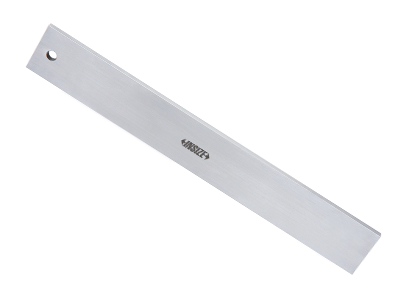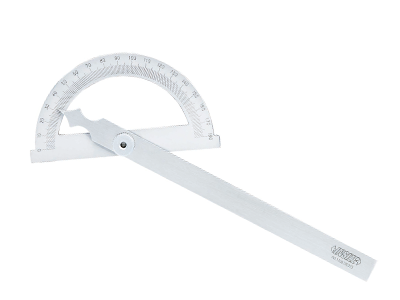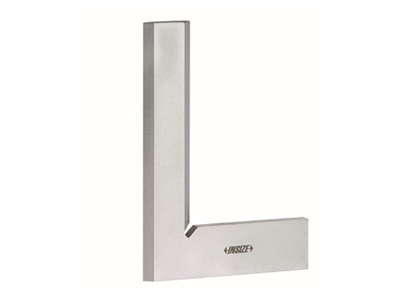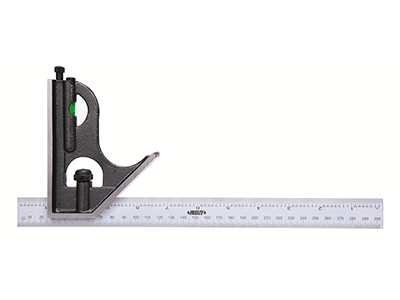Straight Edges, Squares & Protractors
Steel, Granite & Magnalium straight edges, squares & protractors


Straight Edges


Straight Edges from Insize, Mitutoyo. Available in granite and stainless steel up to to grade 0.
Protractors


Dial, Manual & Digital Protractors from Insize and market leaders Mitutoyo. Different sizes available up to 200x300mm.
Squares


Squares from Insize and Moore & Wright. Available in granite and stainless steel up to to grade 0.
Straight Edges, Machinist Squares & Protractors
What is a straight edge and how is it used?
Straight edges (or straightedge) are used to measure the flatness of a workpiece, object or feature. Most straight edges differ from a ruler in that it does not have a scale along its edge, making it only suitable for measuring flatness or drawing straight lines where measurements aren’t required. An example use for straight edges would be checking the flatness of machined surfaces over a length.
Key factors to consider when choosing a straight edge is the value of the flatness and parallelism. Flatness measures how straight the edge is across its length; the higher the flatness value, the less straight the edge is. Parallelism measures how parallel the top and bottom of the edge is; the higher the parallelism value, the less parallel the edges are and therefore more likely to provide an inaccurate measurement.
What different types of straight edges are available?
Straight edges come in a variety of materials and sizes depending on your application. They can be made of tool steel, magnalium or granite. Granite will provide the highest accuracy, with both flatness and parallelism being the lowest across the range. Magnalium is the most lightweight material and so is perfect for general use or where the straight edge needs to be held upwards. It also doesn’t rust or deform giving exceptional tool life. Tool steel is the most economic straight edge material and is useful where accuracy is of secondary concern.
Where possible, it is recommended to use a straight edge with as short a length as possible. This is because parallelism and flatness values increase with size. For instance, if you need a straight edge to measure 1m, using a 6m long straight edge would likely give an inaccurate picture of how straight the surface is.
What is a machinist square and how is it used?
A machinist square is a measuring instrument used to mark off or check the angle of a workpiece, object or feature. In most cases, this would be a 90° angle and therefore check the squareness of a workpiece. A square traditionally consists of a straight stainless steel edge attached to a second (often heavier) straight edge perpendicular to the first. If the angle isn’t 90°, the two straight edges will equal the specified angle.
To use a machinist square, the base (the heavier or bevelled side) is placed perpendicular to the surface to be measured. The blade edge (the lighter side) is then pushed up against the workpiece to be measured. If you look behind the blade and there is a gap between the square and the workpiece, it is likely the workpiece is not to the correct angle.
What different types of machinist square are available?
The most common difference seen between machinist squares is the angle with which the square measures. Standard machinist squares are at right angles (90°) but other angles are available including 45°, 60°, 120°, 135° and more. These angles are rarely asked for however and would be for very specific jobs or applications.
The grade of machinist square is also important when determining which square to use, as it refers to the level of accuracy it conforms to. Grade 2 is the least accurate and is best used in workshops where high accuracy is not required. Grade 0 and grade 00 are inspection grades used where higher accuracy is required to the smallest tolerances (grade 00 is more accurate than grade 0).
Some machinist squares also feature bevelled edges, which are designed for marking off as well as providing both outside and inside measurements.
What is a precision protractor and how is it used?
A precision protractor is a measuring instrument used to measure and find angles. Traditionally, protractors are a semi-circular piece of plastic or metal which have a scale scribed around its radius. The scale would be in degrees and, in a semi-circular design, range from 0° up to 180°. Some protractors are full circles and range from 0° up to 360°. In metrology, protractors will be made of metal, like stainless steel, to withstand general workshop wear and tear.
When using a protractor in engineering, you would set the straight edge on a workpiece and alter the protractor until you have it in the correct position for measuring the angle. You can then either scribe the location of the correct angle or check whether the workpiece has been machined to the correct specifications. The straight edge on a protractor can also be used as a ruler; some protractors also come attached to rulers, meaning it can measure length as well as angles.
Certain series of protractors can also be doubled up with other measuring tools, such as height gauges, to create a more complex and comprehensive measuring solution.
What different types of protractors are available?
All protractors used in an engineering context will be made of a tough metal substrate like stainless steel to prevent rust and deformation during use. Basic protractors will feature an analogue scale written onto the protractor surface, whereas more advanced models may feature a dial or digital readout to show the angle value to a higher accuracy. Digital protractors will provide the most accurate reading, with accuracy up to 0.05°.
Protractors come in different shapes, styles and functionality. Some protractor models include spirit levels for measuring flatness, blades for marking off lines at specific angles and rulers for measuring the length of a workpiece as well as a given angle. Depending on the style, protractors may be made from a higher strength substrate and also have an IP rating. For instance, Insize’s 2174 series waterproof digital protractor has an IP54 waterproof & dustproof rating (Dust protected with only limited ingresses of dust permitted & protected against water splashes from all directions).
Don't have an account?
Creating an account has many benefits: check out faster, keep more than one address, track orders and more.
Or
Checkout as a Guest
Place your order without creating an account for extra convenience.



